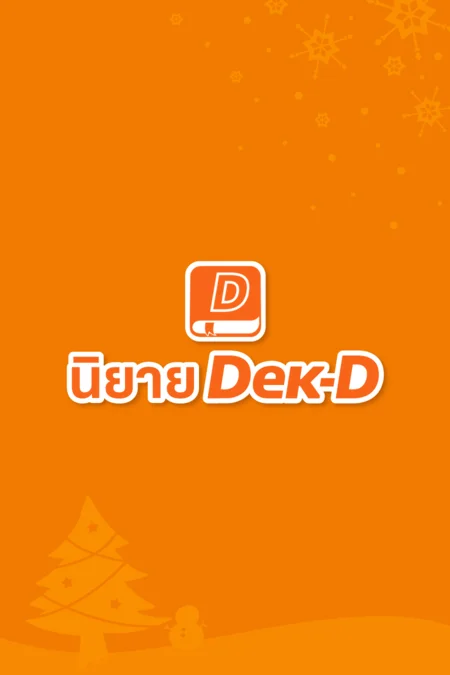
Web Application
ผู้เข้าชมรวม
2,665
ผู้เข้าชมเดือนนี้
12
ผู้เข้าชมรวม
2.66K
เนื้อเรื่อง
คืนค่าการตั้งค่าทั้งหมด
คุณแน่ใจว่าต้องการคืนค่าการตั้งค่าทั้งหมด ?
Web Application
The purpose of this article is to improve your ability to find that balance by adding to your understanding of web applications as an interactive medium. What distinguishes a web application from a traditional, content-based website and what are some of the unique design challenges associated with web applications? A reasonable launching point is the more fundamental question, “What is an application?”
What is an application?
The first step toward differentiating web applications from traditional content-centric websites is to focus on the “application” part of the equation. According to the American Heritage Dictionary, an application is (among other things), “…a computer program designed for a specific task or use.” That last phrase, “specific task,” is perhaps the most important.
The fundamental purpose of all web applications is to facilitate the completion of one or more tasks. Unlike visitors to traditional, content-centric websites, users of web applications invariably arrive with specific goals, tasks, and expectations in mind. Of course, that’s not to say that visitors to content-based websites don’t also arrive with certain goals and expectations, but rather that the motivations for using a web application are almost always explicit and precise.
One of the most important implications of this task-based orientation is the degree to which the application should call attention to itself. Compared to content-centric websites, video games, and various forms of entertainment media, application design succeeds not when it draws attention to itself but when it recedes into the background. This requires the designer to find solutions fundamentally natural to both the user and the medium, allowing the application itself to become transparent. The paradox of application design is that the perfect solution is invariably the one that goes unnoticed.
While this does not mean that an application’s design shouldn’t be enjoyable and aesthetically pleasing, it does mean that the design should play a subservient role to the user’s work.
A second implication of their task-based orientation is that web applications have to provide users with various milestones informing them when tasks are complete. In other words, web applications have to support an end-state in a way that content-based sites typically don’t.
In addition to the challenges resulting from their focus on task completion, the manner in which web applications function and connect with users highlights other issues affecting web application design.
When is a website a web application?
Without being overly concerned about semantics or classification (if that’s actually possible on a site like Boxes and Arrows ), it is important to establish an objective means of differentiating between a web application and a traditional website. To wit, in contrast to content-based websites, a web application possesses both of the following observable properties:
* One-to-one relationship – Web applications establish a unique session and relationship with each and every visitor. Although this behavior is fundamental to Web applications it is not present in either content-based websites or desktop applications. A web application such as Hotmail knows who you are in a way that Cnet or even Photoshop doesn’t.
* Ability to permanently change data – Web applications allow users to create, manipulate, and permanently store data. Such data can take the form of completed sales transactions, human resources records, or email messages to name but a few. This contrasts with web services like Google that allow users to submit information but do not allow them to permanently store or alter information.
Although these two characteristics alone result in a fairly broad definition of web applications, websites that possess both of them necessarily contain a degree of application behavior, logic, and state lacking in traditional content-based sites. In addition, they require a significantly more sophisticated level of user interactivity and interaction design than what is associated with content sites.
This distinction between websites and web applications is most obvious in situations where a given site is almost exclusively composed of either content OR functionality. Newsweek.com (a website) and Ofoto (a web application) are two such cases. However, even popular web destinations such as Amazon, and myYahoo!, sites that combine both content AND functionality, should be considered web applications because they meet these two criteria and therefore exhibit the interactive complexities and behaviors associated with applications.
In the case of Amazon, this takes the obvious form of personalized content and complex transactions, as well as a variety of other functions including the creation and storage of , the uploading and ordering of digital photographs, the editing and tracking of orders, and many others. That’s not to say that all online stores qualify as web applications; in fact most don’t. But Amazon and other stores of similar sophistication have the same characteristics and design considerations as more traditional applications such as email and contact management.
Granted, consumer sites like Amazon and myYahoo! typically lack the level of complexity found in licensed enterprise applications such as Siebel, PeopleSoft, or Documentum, but as a tool for classification, complexity is both inadequate and subjective.
Whether any particular application has sufficient complexity to require a highly skilled interaction designer is a question that can only be answered on a case-by-case basis. The point remains, however, that if a web property establishes a one-to-one relationship with its users and allows those users to edit, manipulate, and permanently store data, then it possess certain capabilities and complexities that distinguish it from traditional content-centric websites.
So what?
If the point of all this definition stuff was simply to provide a consistent method for classifying web properties, the whole exercise could be dismissed as little more than academic rhetoric. What’s useful about this definition, however, is not so much its utility as a classification scheme, but rather its ability to highlight some of the unique design challenges and functional benefits associated with web applications.
One of the most significant challenges and benefits results from the one-to-one relationship web applications form with their users.
Because a web application requires each user to uniquely identify themselves to the system, typically through a username and password pair, the application can be dynamically altered from one user to the next. This can take both the obvious form of personalized content and the more subtle and complex form form of personalized functionality based on roles and privileges. This type of dynamic behavior allows a complex corporate accounting application, for example, to provide different functionality to account managers, regional directors, corporate executives, etc.
Although this type of capability has been a mainstay of enterprise applications for some time, many less sophisticated or expensive applications now employ this behavior. For example, consumer-based online services can add and remove features or advertising based on whether or not a particular user has paid a subscription fee.
More so than any other interactive medium, a web application has the ability to adapt itself to each user, providing them with a personalized and unique experience. Accommodating the full range of permutations afforded by this capability is a unique and significant design challenge. Because various functions, interface controls, and data can dynamically come and go from the interface, designers are forced to think in terms of modular components that are simultaneously harmonious and autonomous.
In the same way that it is practically impossible for a visual designer to fully anticipate how a given web page will look in every situation, the designers of large-scale applications also struggle to fully document and consider every possible permutation of functionality and data.
Another unique design challenge associated with web applications results from their ability to allow users to make permanent changes to stored data. Because web applications are fundamentally database applications–that is, they store and present information contained in a defined database structurethe user’s information almost always has to fit within a predetermined format. Certain fields are present; some fields are required, others are not; some require a specific type of value; and still others require a value within a precise range. The result of all this is a level of data validation and error recovery unseen in either content-based websites or most desktop applications.
Accommodating this behavior requires the designer to carefully consider the task flow from one operation to the next, the full scope of potential errors, the most expedient way to recover from errors, and of course the holy grail of it all, the ideal solution for avoiding errors altogether.
All this points to one critical conclusion: web applications are a new form of interactive media, distinct from both content-based websites and traditional desktop applications. Therefore, the creation of truly useful and usable web applications requires the designer to understand, appreciate, and exploit the unique capabilities, limitations, and conventions of this new medium rather than simply approaching the design problem from the perspective of more established interactive mediums.
Summary of Web Application
Application is the software for users to use in the specific task. Web application does always correct work than visitors. It is so important. The designer must to design the web application to find solutions and support the issues of users.
Website is a content-based websites. Information of website can edit by webmaster only but in Web application every visitor can write, send or anything to the website. Web application has clearly seen about process by One-to-one relationship that is Web application makes relationship to interactive every visitor which is not a content-based websites and Ability to permanently change data is Web application allows users can create, write, play and store the data.
For example Gmail.com, this web can receive or send an email and the email of users can store in the website permanently and users can use calculator calendar search in one website. Web application has advantage more than website but in some case website do not critical use Web application. For instance website newspaper, it has purpose to visitors reading news only. We can make a content-based websites because Web application much has a specified person to make it but website a general person can practice little to make it.
As we have seen, Web application is separated from content-based websites and traditional desktop applications and becomes in a new structure of interactive media. Thus, designer must comprehend, value, utilize the unique capabilities, restriction and agreement of new medium web application rather than the aspect of more established interactive mediums to plainly access the design problem because the creation of actually useful and usable web application needs it.
ผลงานอื่นๆ ของ ::- [ คุ J x นู n ! c * Z ]-:: ดูทั้งหมด
ผลงานอื่นๆ ของ ::- [ คุ J x นู n ! c * Z ]-::



ความคิดเห็น